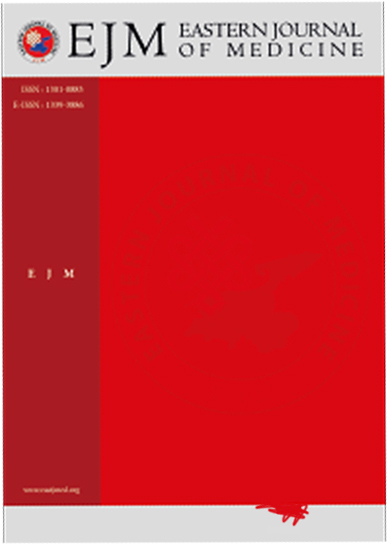Is it in our genes that we're going to have pulmonary embolism?
İbrahim Halil Uney1, Ahmet Arisoy2, Aysel Sunnetcioglu2, Buket Mermit Çilingir2, Hanifi Yıldız2, Hulya Gunbatar2, Selami Ekin2, Selvi Asker21Pulmonary Medicine, Hendek State Hospital, Sakarya, Turkey2Department of Pulmonary Medicine, Yuzuncu Yil University Medical Faculty, Van, Turkey
INTRODUCTION: Pulmonary thromboembolism is a disease with high mortality and morbidity, which can be recurrent, difficult to diagnose, yet preventable and treatable. In this study, our aim was to evaluate comorbidities, risk factors, laboratory results, and clinical scoring in patients diagnosed with pulmonary embolism. Our primary goal was to detect genetic mutations in cases of pulmonary embolism with acquired risk factors.
METHODS: Our study is a prospective study that includes clinical information, laboratory tests, Wells scoring, admission, and the prospective history of 60 patients with no previous history of venous thromboembolism (VTE) and no history of anticoagulation use. These patients were admitted to the chest diseases outpatient clinic, emergency department, or hospitalized for another reason and diagnosed with pulmonary thromboembolism.
RESULTS: The mean age of the patients was 59.9 ± 18.7 years. There were at least one genetic/congenital risk factor in all cases and at least two risk factors in more than half of the cases. The most common mutations were plasminogen activator inhibitor type 1 (PAI-1) and Methylenetetrahydrofolate Reductase (MTFHR) heterozygote mutations.
DISCUSSION AND CONCLUSION: Pulmonary embolism continues to be a more prevalent disease with increasing age and associated risk factors. Since there is at least one acquired risk factor in all of our cases, we think that almost every patient may have acquired risk factor if the history is deepened. We also think that genetic or thrombophilic conditions may be detected in almost all cases diagnosed with pulmonary embolism.
Manuscript Language: English














